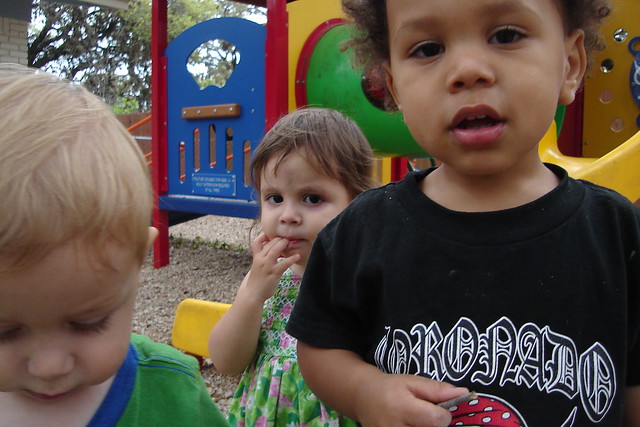Topic 1.2: Disruption of Continuity in ECE Environments
Continuity of care in early care and education happens when children experience the same type of quality child care over a long period of time.
Continuity of care includes:
- The same routines that a child knows are going to happen (a daily schedule)
- Familiar expectations (rules, people, places)
- Familiar curriculum, teaching and learning practices, etc.
Experiencing meaningful relationships and quality education, which follows the Kentucky Early Learning Standards, are important for healthy social, emotional, physical, and educational growth.
When children stay in the same child care setting for long periods of time:
- They learn how to develop healthy relationships with other children and adults.
- They are more likely to be successful in school and later in life.
Moving from one child care setting to another interrupts familiar routines and meaningful relationships.
Meaningful relationships are safe and healthy relationships that form between children and adults when they spend time together during routine activities.
When caregivers change often it is hard for children to form meaningful relationships.
External transitions can add harm by interrupting the ability for the child to form the meaningful attachments to both peers and adults which are necessary for healthy emotional and social development.
- External transitions, including suspensions and expulsions, are harmful to children because they increase the chance for another move in the future.
- As we discussed earlier in the course, negative behaviors tend to increase when a child moves to a new child care setting.
- When children experience multiple external transitions, negative behaviors continue to build on the previous negative behaviors.
- The caregivers and peers in the new child care setting may have a difficult time adjusting to the increased negative behavior because it takes time to form meaningful relationships in the new child care setting.
Every time a child transitions to a new child care setting, they must adjust to new rules, roles, routines, children, and adults.
External transitions may lead to a regression in skills and or development.
When people of any age start a new project or activity their skills and abilities go down.
- When children are placed in new situations, they show less ability to complete the same tasks they can complete in familiar situations.
- Regression is a natural part of adjusting to change.
- When a child experiences multiple external transitions, , they may not be able to make up for the regression.
- Children who experience multiple external transitions may be older when reaching the same developmental milestones as children who do not experience as many changes.
- It’s important to realize how big the impact of changing child care is on children, consider this example:
Consider Clelia
Clelia’s mother has not held a job for more than a few months, so Clelia has been in and out of child care settings since an early age. Clelia’s mother and sisters take care of Clelia when she is not in child care. Clelia’s family does not have a car so Clelia goes to the child care setting that is closest to her mother’s job. Because of this, Clelia has been cared for in many different child care settings.
Her current teacher Ms. Rosina notes that Clelia has a developmental delay. Ms. Rosina would like to talk to Clelia’s mom about making a referral to Early Intervention Services.
Ms. Rosina makes a note to speak with her director about what to do next because the delay is likely due to the repeated external transitions Clelia has experienced.


